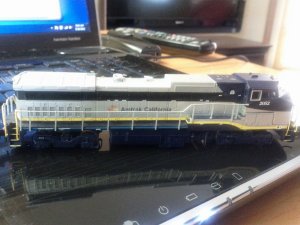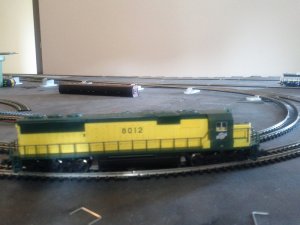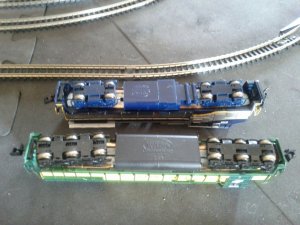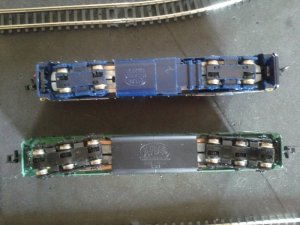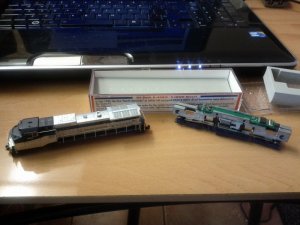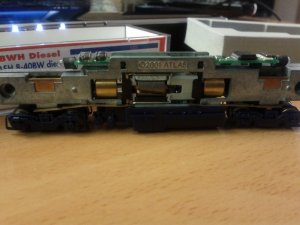Hi, everyone. I came across this site while asking Google to help me with model railroading.
I have a whole bunch of N scale stuff that was put away in a closet and my 9 year old dug up and asked what it was all for. So we set it up! And now she's excited about it all!
But I'm looking at this and realizing that of the locomotives I have, none have ever been cleaned or lubricated. One makes buzzing noises as it moves around the track, so I'm guessing it needs it for sure.
I have 2 Atlas Dash 8-32BWH (one of which makes the buzzing noise) and 1 Atlas SD60, N scale, all are DCC equipped. (Just bought a MRC Prodigy Express)
My main question is how do I remove the shells so I can get at the "inside" to lubricate it? I'm terrified of breaking the locomotive and all I can find is that I should be able to release the shell "simply". ops:
ops:
The other question is that I have found many sites that attempt to explain what to lubricate, but is there one with helpful pictures or perhaps a good video for N-scale?
Thanks,
ers
I have a whole bunch of N scale stuff that was put away in a closet and my 9 year old dug up and asked what it was all for. So we set it up! And now she's excited about it all!
But I'm looking at this and realizing that of the locomotives I have, none have ever been cleaned or lubricated. One makes buzzing noises as it moves around the track, so I'm guessing it needs it for sure.
I have 2 Atlas Dash 8-32BWH (one of which makes the buzzing noise) and 1 Atlas SD60, N scale, all are DCC equipped. (Just bought a MRC Prodigy Express)
My main question is how do I remove the shells so I can get at the "inside" to lubricate it? I'm terrified of breaking the locomotive and all I can find is that I should be able to release the shell "simply".
The other question is that I have found many sites that attempt to explain what to lubricate, but is there one with helpful pictures or perhaps a good video for N-scale?
Thanks,
ers


